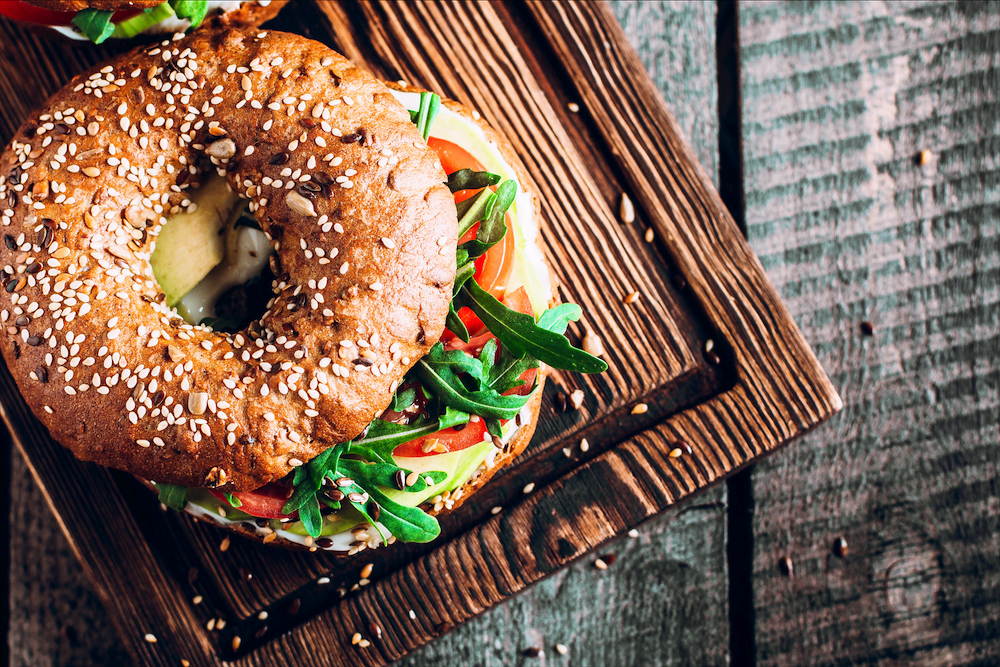Food Fight: Traditions in American Food Culture
Americans are fiercely proud of their regional specialties and can get pretty worked up about other parts of the country making them improperly. But there’s no reason why these foods have to be made in a specific region. So why are people so protective of them?
By Tori Otten
The best place to get bagels in North America, if not the world, is Absolute Bagels, a cramped, noisy deli a few steps from the corner of Broadway and 108th Street on the upper west side of Manhattan. It’s been closed twice for health code violations, once in 2013 and again in 2017, but the line still runs out the door.
So, is Absolute Bagels really the very best? “Anyone who says it’s not Absolute Bagels is a shithead,” proclaims Ben Hoffman, a gubernatorial campaign staffer and lifetime New Yorker. Outside of New York, he says, the only bagels worth trying might possibly be from French Canada, although Hoffman says has never confirmed “the legends” himself.
Local specialties in the United States are highly contentious. Every region insists its version of a dish is the only one worth eating. Challenging that belief can ruffle feathers at the very least, or produce regional rivalries. When gubernatorial candidate Cynthia Nixon ordered lox – a kind of cured salmon – on her cinnamon raisin bagel (lox is typically eaten on plain bagels), the Internet flew into an uproar over her blatant disregard for tradition. One Twitter user went so far as to call it “a crime against the bagel gods.”
When it comes to bagels, though, proximity to New York isn’t just part of bagel culture – it’s crucial to actually getting a decent bagel.
“The fresh quality of a bagel is key,” said Ben. “If the guy [behind the counter] says, ‘Give me two minutes and I’ll give you a fresh one,’ you wait two minutes! A fresh bagel should be crunchy on the outside – the crust is real – and spongy perfection on the inside.”
In addition to the freshness of the product, Ben (and many other New Yorkers) insist that the New York tap water is what sets a bagel apart. The mineral deposits in New York City tap, the result of old plumbing infrastructure, apparently create a flavor unique to New York bagels.
“The water’s not even kosher!” Ben added, laughing, referring to the bagel’s traditionally Jewish association. “But the water in New York City tastes better than anywhere else in the world, and New York makes the best bagels. Correlation? Causation? Eh, who’s to say!”
“Local specialties in the United States are highly contentious. Every region insists its version of a dish is the only one worth eating.”
But it’s not just New York bagels. Marylanders insist that crab cakes should only be made with Maryland blue crab, and every family will insist that their crab cake recipe is the best. Barbecue culture spans almost all of the southern United States, with further divisions within the states: North Carolina alone has three different kinds of local barbecue sauce.
Chicago native Maya Blackstone, who lives in New York’s financial district and is currently getting her Master’s in Morningside Heights, has similarly strong feelings about the deep-dish pizza from her hometown.
“The best place to get it is definitely Giordano’s,” she said. “Don’t know anywhere else that is worth it. There’s no point in getting it in any other city besides Chicago.”
There are several elements that factor into the authenticity of these regional dishes, but the common denominator is always the location, and the traditions that come with it. For Maya, there’s a ceremony to having deep dish pizza.
“You really have to sit down for a meal” when you eat it, she says. “At most places, it takes 45 minutes to make, and it fills you up like a lasagna.” And since it’s a Chicago dish, you simply “have to eat it in Chicago.”
“Food rivalries are ubiquitous,” said culinary historian Dr. Libby O’Connell, the author of The American Plate: A Culinary History in 100 Bites. “They’re actually defined by law in Europe! Take champagne: if it’s not from Champagne, then it’s just ‘champagne method.’ It’s rare you find something [in the United States] you’re not allowed to reproduce.”
The thing is, all those regional American foods can easily be reproduced elsewhere. West Coast Dungeness crabs are another popular ingredient for crab cakes. Pizzeria Uno, the restaurant that first served deep-dish pizza in Chicago in 1943, is now the national chain Uno Pizzeria & Grill. And despite popular opinion, the key element to making a perfect bagel is not the tap water, but the cooking process.
As chef Richard Coppedge of the Culinary Institute of America explained to NPR, the critical step of the bagel-making process is boiling the dough rings before baking them, which produces the thicker, chewy crust and specific flavor compounds. It’s also a step that often gets skipped for the sake of speed and efficiency.
“We aren’t unique in this intense pride of a product that defines our home. It’s like rooting for the home team,” said Dr. O’Connell. There are so many different regional specialties because America is a country of immigrants.
There’s a “braided food culture” in the United States, made of the triangular influence of Native American, African-American, and European- or Anglo-American culture, combined with locally available seasonings and ingredients. Immigrants who arrived in the New World, either as settlers or as slaves, brought their cooking traditions with them.
“Cooking is how you create home: it’s how you bring your old home with you, and it’s how you leave your mark on the new.”
“They brought their food culture pride with them, and they wouldn’t let go of their traditions,” Dr. O’Connell explained. But as immigrants spread across the country, they adapted their recipes to the American food market: meat and game was more easily accessible than in Europe, as well as new vegetables, like corn.
Cooking is how you create home: it’s how you bring your old home with you, and it’s how you leave your mark on the new. From the Neapolitan immigrants in Chicago who created an “American style” pizza, thicker than anything found at home but piled high with familiar flavors; to the bakers on the Lower East Side of New York who adapted the hard, circular bread of the old country — a staple of traveling merchants — into the bagel we know and love today.
These foods represent where we came from, and what we’ve built. “It’s the same way you have regional music,” said Ben. “It becomes a symbol for the area.” ●






